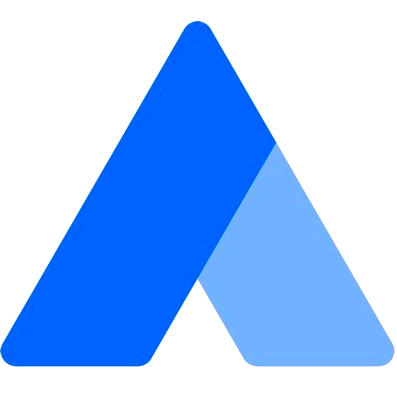Acquire and Databricks integration


How to connect Acquire and Databricks
Create a new workflow and add the first step
In n8n, click the "Add workflow" button in the Workflows tab to create a new workflow. Add the starting point – a trigger on when your workflow should run: an app event, a schedule, a webhook call, another workflow, an AI chat, or a manual trigger. Sometimes, the HTTP Request node might already serve as your starting point.
Build your own Acquire and Databricks integration
Create custom Acquire and Databricks workflows by choosing triggers and actions. Nodes come with global operations and settings, as well as app-specific parameters that can be configured. You can also use the HTTP Request node to query data from any app or service with a REST API.
Supported API Endpoints for Acquire
Authorize OAuth
Initiate the OAuth authorization process.
Tracklog
Log tracking information for OAuth.
Authorize user
Handles the authorization process for OAuth.
Track log
Tracks the log of OAuth operations.
List profiles
Retrieve the list of user profiles.
List profiles
Retrieve a list of profiles.
Create profile feedback
Submit feedback for a profile.
Get profile details
Retrieve details for a specific profile.
Send a message
Send a message associated with a profile.
List profile tags
Retrieve a list of tags associated with profiles.
List profile agents
Retrieve a list of agents associated with profiles.
Create or update a profile
Add or update profile information.
Delete a profile
Remove a profile from the system.
Get profile visit history
Retrieve the history of visits for a specific profile.
List sender emails
Retrieve a list of sender emails associated with profiles.
List feedback
Retrieve feedback associated with profiles.
Add or update profile
Create or update profile information.
List profiles
Retrieves a list of profiles.
Manage tags
Handles the tags associated with profiles.
Manage campaigns
Handles campaigns related to profiles.
Manage sender emails
Handles the sender emails associated with profiles.
List profiles
Retrieves a list of user profiles.
List chat notes
Get notes associated with a specific chat.
Get chat statistics
Retrieve statistics on chat sessions.
Get team analytics
Fetches analytics data related to the team.
Get conversion rate
Retrieves the conversion rate from analytics.
List agents
Retrieve a list of all agents.
Add agent
Create a new agent in the system.
Edit agent
Update details for a specific agent.
Save operating hours
Set the operating hours for the service.
Get operating hours
Retrieve the operating hours of the service.
Activate bot
This endpoint activates or refreshes the Bot for the session.
List campaigns
Retrieve a list of marketing campaigns.
List messages
Retrieve messages sent by users.
Get FAQ categories
Retrieve categories for FAQs.
Get setup details
Retrieve details about the setup.
List articles
Retrieve recent articles from the knowledge base.
Get suggestions
Retrieve article suggestions for users.
List triggers
Retrieve a list of triggers configured in the system.
Get webhook data
Retrieves huge data about visitor including visitor ID and chat ID.
Integrate your chatbot
Integrate a chatbot into the software.
Logout visitor
Remove all acquire data from your app related to visitorHash.
Get Visitor ID
Retrieve the visitor ID from the SDK.
Set user details
Set your user details for visitor identification.
To set up Acquire integration, add the HTTP Request node to your workflow canvas and authenticate it using a generic authentication method. The HTTP Request node makes custom API calls to Acquire to query the data you need using the API endpoint URLs you provide.
See the example hereThese API endpoints were generated using n8n
n8n AI workflow transforms web scraping into an intelligent, AI-powered knowledge extraction system that uses vector embeddings to semantically analyze, chunk, store, and retrieve the most relevant API documentation from web pages. Remember to check the Acquire official documentation to get a full list of all API endpoints and verify the scraped ones!
Supported API Endpoints for Databricks
List clusters
Retrieve a list of all the clusters in your Databricks workspace.
Create cluster
Creates a cluster with the specified Databricks Runtime version and cluster node type.
Delete cluster
Permanently deletes a cluster from your Databricks workspace.
Delete cluster
Permanently deletes the cluster with the specified cluster ID from the workspace.
Create cluster
Creates a new cluster in the Databricks workspace.
Create job
Creates a Databricks job that runs the specified notebook on the specified cluster.
Create directory
Creates an empty folder in a volume.
Upload file
Uploads a file to a volume.
List directory contents
Lists the contents of a volume.
Delete file
Deletes a file from a volume.
Delete directory
Deletes a folder from a volume.
List groups
Lists the display names for all of the available groups within the Databricks account.
To set up Databricks integration, add the HTTP Request node to your workflow canvas and authenticate it using a generic authentication method. The HTTP Request node makes custom API calls to Databricks to query the data you need using the API endpoint URLs you provide.
See the example hereThese API endpoints were generated using n8n
n8n AI workflow transforms web scraping into an intelligent, AI-powered knowledge extraction system that uses vector embeddings to semantically analyze, chunk, store, and retrieve the most relevant API documentation from web pages. Remember to check the Databricks official documentation to get a full list of all API endpoints and verify the scraped ones!
Acquire and Databricks integration details
FAQ
Can Acquire connect with Databricks?
Can I use Acquire’s API with n8n?
Can I use Databricks’s API with n8n?
Is n8n secure for integrating Acquire and Databricks?
How to get started with Acquire and Databricks integration in n8n.io?
Looking to integrate Acquire and Databricks in your company?
The world's most popular workflow automation platform for technical teams including
Why use n8n to integrate Acquire with Databricks
Build complex workflows, really fast


